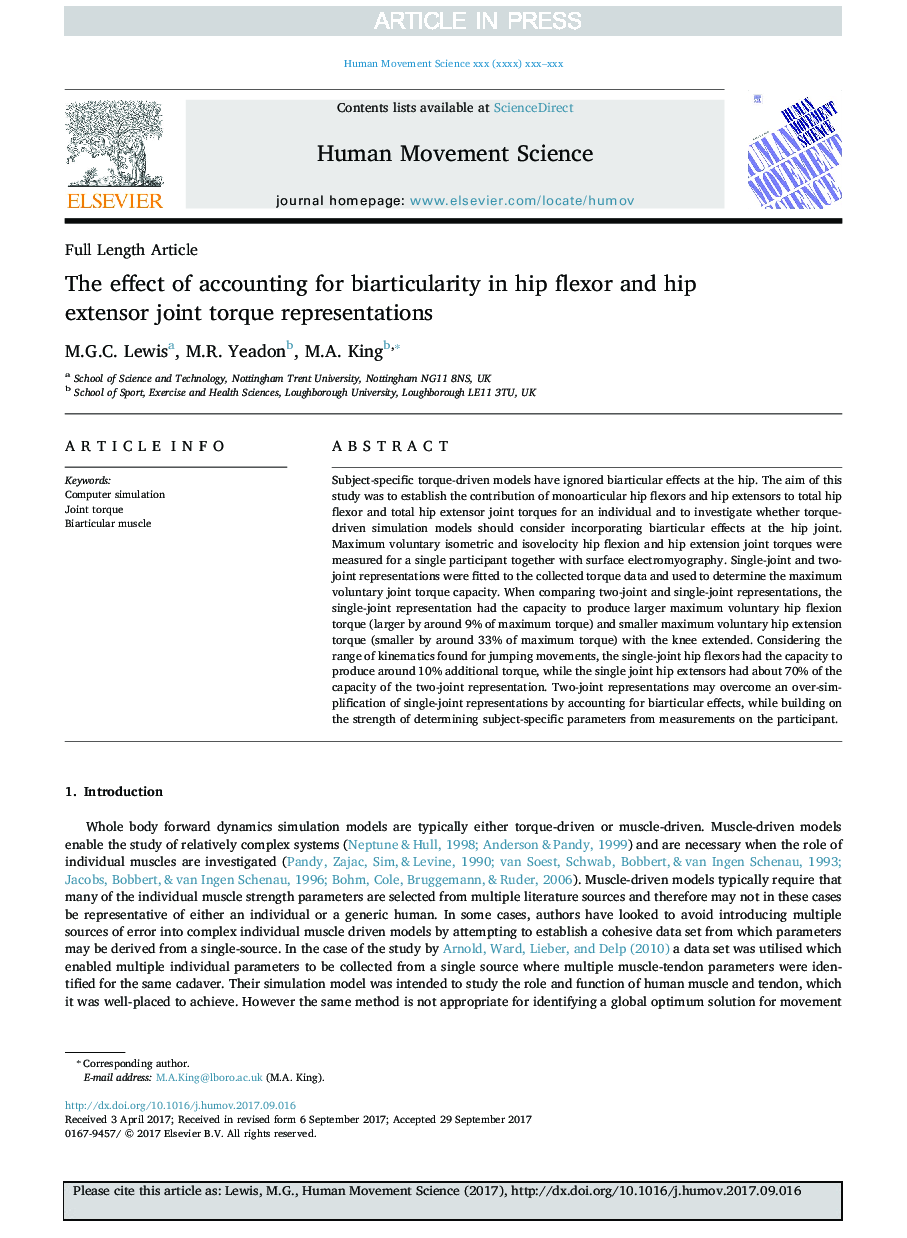| Article ID | Journal | Published Year | Pages | File Type |
|---|---|---|---|---|
| 7291069 | Human Movement Science | 2018 | 12 Pages |
Abstract
Subject-specific torque-driven models have ignored biarticular effects at the hip. The aim of this study was to establish the contribution of monoarticular hip flexors and hip extensors to total hip flexor and total hip extensor joint torques for an individual and to investigate whether torque-driven simulation models should consider incorporating biarticular effects at the hip joint. Maximum voluntary isometric and isovelocity hip flexion and hip extension joint torques were measured for a single participant together with surface electromyography. Single-joint and two-joint representations were fitted to the collected torque data and used to determine the maximum voluntary joint torque capacity. When comparing two-joint and single-joint representations, the single-joint representation had the capacity to produce larger maximum voluntary hip flexion torque (larger by around 9% of maximum torque) and smaller maximum voluntary hip extension torque (smaller by around 33% of maximum torque) with the knee extended. Considering the range of kinematics found for jumping movements, the single-joint hip flexors had the capacity to produce around 10% additional torque, while the single joint hip extensors had about 70% of the capacity of the two-joint representation. Two-joint representations may overcome an over-simplification of single-joint representations by accounting for biarticular effects, while building on the strength of determining subject-specific parameters from measurements on the participant.
Related Topics
Life Sciences
Neuroscience
Cognitive Neuroscience
Authors
M.G.C. Lewis, M.R. Yeadon, M.A. King,
